The
guidelines for this assignment were to compose an image that conveys the "essence" of water, what it is (liquid), how is looks, feels, tastes, behaves (flows), the role it plays in life, or some other meaning or characteristic associated with water.
Carol's image of
Water in Motion was a great capture. The amount of water suspended in the air, as well as the displacement of the water as it was pushed forward by the swimmer definitely helped to convey the power and effort of the swimmer. Nicely done. (And nice job using a high shutter speed to avoid motion blur on the swimmer.)
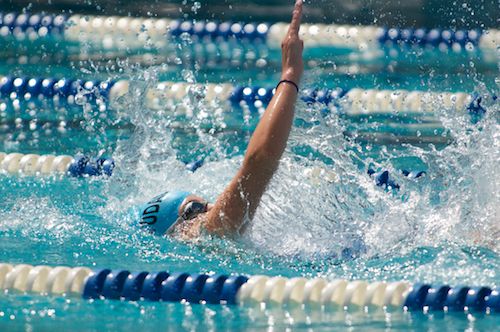 Water in Motion
Water in MotionPhotographed by Carol Burkett
Chris' take in
Clouds of Relief was a different interpretation than what I anticipated, but I can certainly understand this interpretation based on the hot dry weather we've been having here in Kansas. I would love to have seen this same scene with water pouring down from the sky...
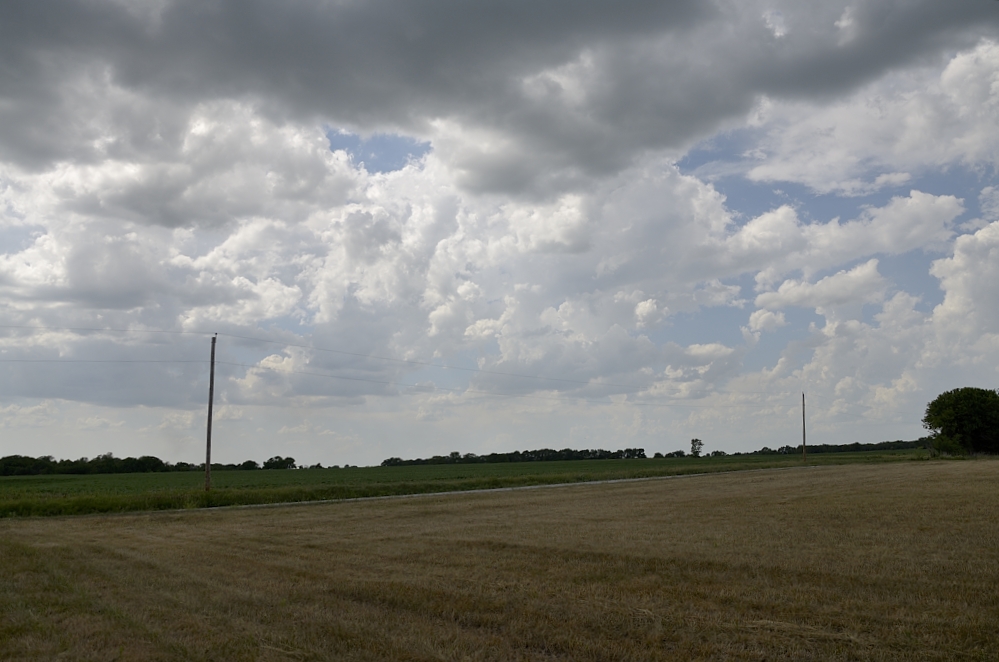 Clouds of Relief
Clouds of ReliefPhotographed by Chris Franklin
was another amazing creation from Michele. I can see from the shooting data that she used a long (5 second) shutter speed, and I assume she used an off-camera strobe to "freeze" the water droplets in the air. The combination of slow shutter speed and flash combined to show motion (the soft blur on the apple) while still providing great clarity in the water. I love the way the bubbles coming up from the apple show the passage of the apple into the water. Obviously this shot required great timing (and I imagine a bit of experimentation). This in another great example of visualizing a concept and then creating an image that conveys that concept by setting the scene (and camera) appropriately. This image was selected as
People's Choice and
Editor's Choice for Artistic Merit. Awesome!
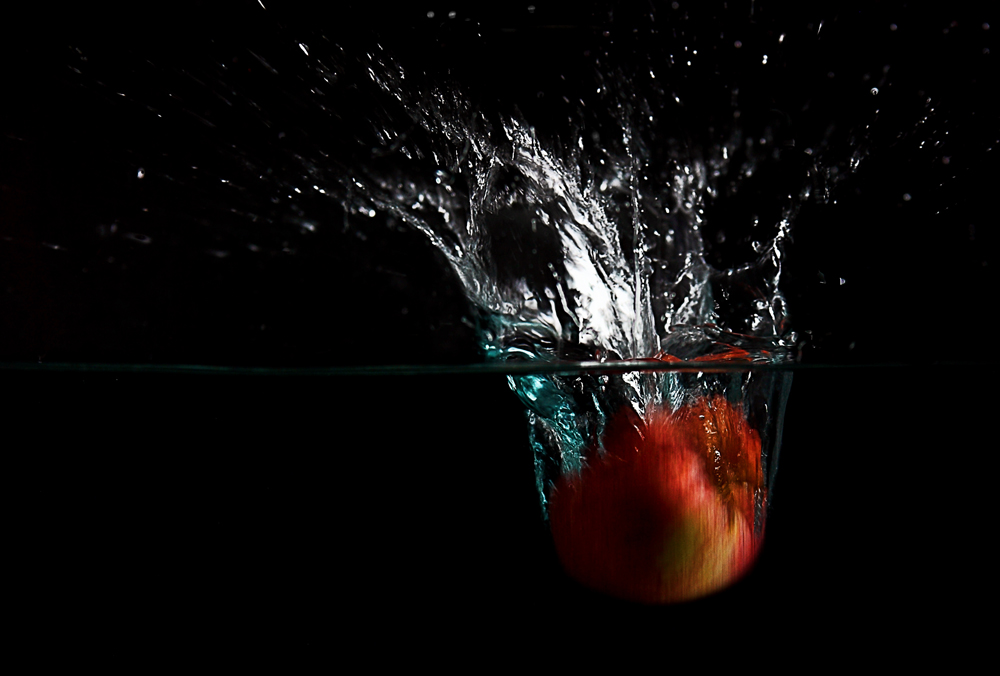 Sploosh!People's Choice
Sploosh!People's Choice and
Editor's Choice for Artistic MeritPhotographed by Michele Bollhalder
I enjoyed Alan's image of the
Fox River, and was especially struck by the silvery reflections on the surface of the river. This image evoked memories of times spent by the water, with feel of the breeze in my face and smell of the water. It seems like a small detail, but I thought the softness of the trees in the background, with just a touch of light showing through the leaves went a long way towards setting the "tone" of the image. Nicely done. It's sometimes surprising how such a simple image can so effectively evoke memories of past experiences.
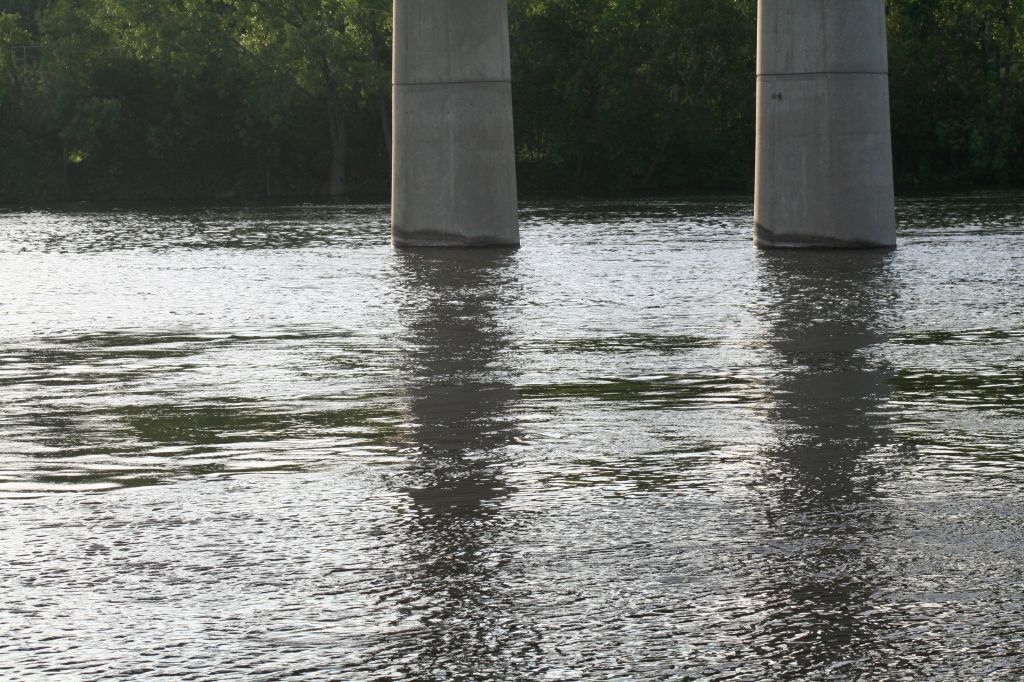 Fox River
Fox RiverPhotographed by Alan Albrecht (Ribot)
Alan's
Chambers Island, Lake Michigan image was also successful at evoking memories of time spent by the water. Again, it's interesting to observe how a small detail helps set the tone of an image. In this case, the soft blue haze on the horizon evokes memories of past times on a large lake or ocean where the water continues on until it becomes one with the horizon, giving a unique perspective and sense of scale to our surroundings.
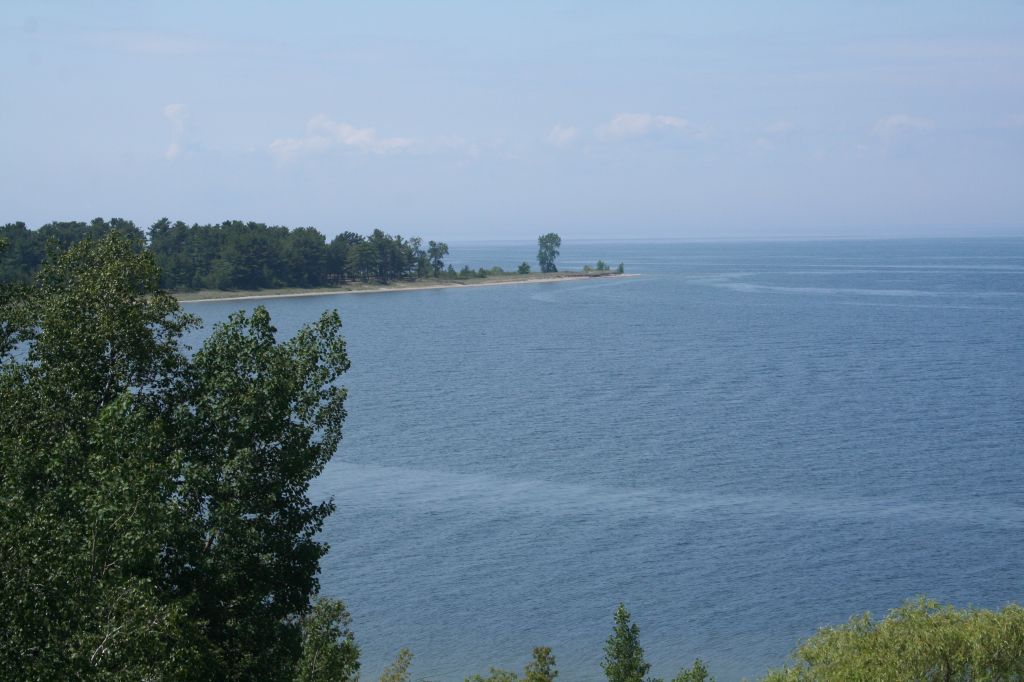 Chambers Island, Lake Michigan
Chambers Island, Lake MichiganPhotographed by Alan Albrecht (Ribot)
I suspect that the harsh mid-day light (gotta love that EXIF data) contributed towards the challenges Rick had in capturing the images of his
Small Stream. Rick made a valiant effort to "soften" the water and create that soft flowing look that we talked about in the assignment description by choosing the lowest ISO and stopping the aperture WAY down. Rick said he knew I was going to comment about the adverse effects (softening from diffraction) of using such a small aperture, but he did it to get the slow shutter speed. I suggested that he might also want to try using a polarizer, which would have helped eliminate the reflections from the rocks (and some from the water), helped control the contrast, and also allowed him to shoot at a slower shutter speed without having to stop down the aperture quite so much. Using a polarizer will typically reduce the exposure by 1.5 to 2 stops, so with a polarizer he could have exposed the image at f16 (on the borderline for diffraction effects) and still had a shutter speed of 1/25 second, which would have still been slow enough to prevent the water from getting "chunky." Obviously the best solution is to go back and shoot the scene under less harsh light, either under overcast/cloudy skies, or in the early morning/late evening. It's really tough (almost impossible) to capture pleasing images of moving water under harsh lighting conditions. (Valiant try though.)
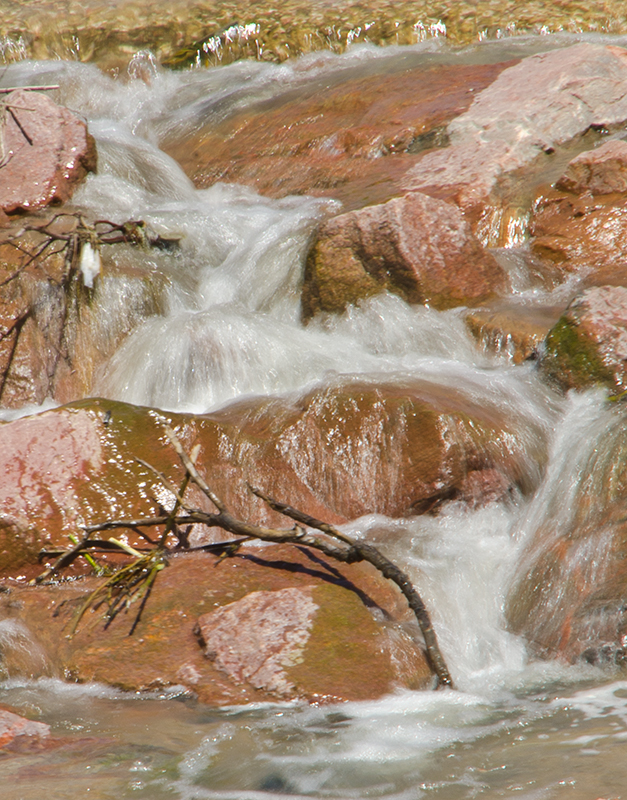 Small Stream
Small StreamPhotographed by Rick Pepin (TrvlRick)
Rick's
Rock in the stream image was better, helped by shooting the scene in partial shade. This allowed Rick to shoot at a more reasonable aperture of f18, although again a polarizer would have helped. (Shooting moving water is one of the few situations where I actually use a polarizer anymore.) This was one of those "almost, but not quite" images that I'm sure would have been better under overcast light.
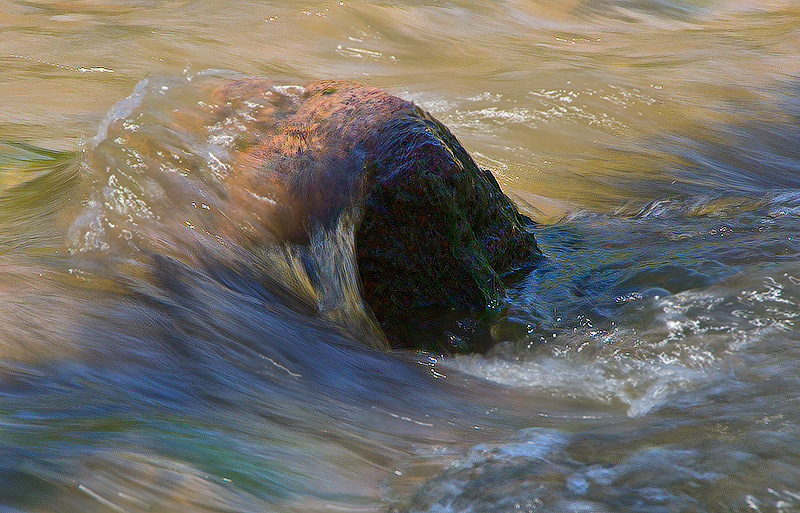 Rock in the stream
Rock in the streamPhotographed by Rick Pepin (TrvlRick)
I really liked the smaller vignettes of the scene that Rick chose to portray in his first two images, and think that his images of the
Small Waterfall would have also benefited from tighter framing (and less contrasty light).
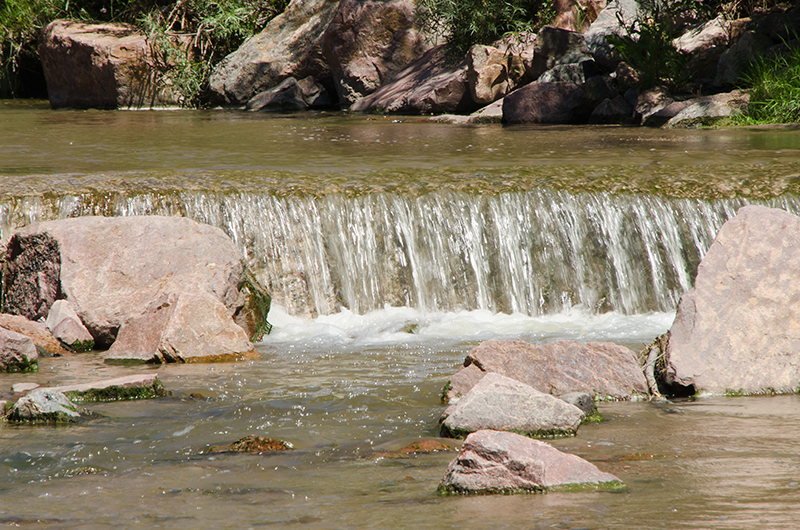 Small waterfall
Small waterfallPhotographed by Rick Pepin (TrvlRick)
Sue's image titled
Water, Water, Who Sees the Water ?? was a
great image that made me smile. There's no water in the image, but that's the point. The expressions and posture of the guys are what makes this image, and even the dog looks a bit dejected. Great capture of this "storytelling" image Sue. (Any luck on the well yet?)
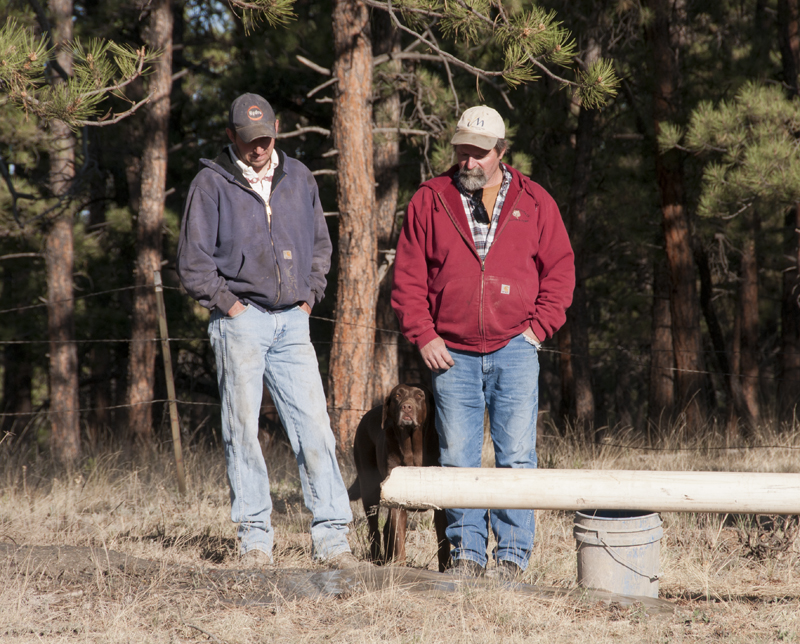 Water, Water, Who Sees the Water ??
Water, Water, Who Sees the Water ??Photographed by Sue Pepin
Sheila's image titled
Silver Surfer or Aquaman? was a wonderful capture, and one of those fortunate "happy accidents" that we have to be ready to find during our image editing. Obviously though this image would not have been possible without Shee's technical prowess in setting up the lighting conditions, backgrounds and props required to capture the water with a 3-dimensional form. Its that "form" that ultimately makes this image a success, and the lighting setup that gives the water that form earns this image
Editor's Choice for Technical Merit. I should have asked you earlier, but what was your lighting setup for this series Shee? You did a great job giving the water "form" and flow.
All three images in the series were great, but to me the first one was a standout because of the "happy accident" and the third image in the series had very pleasing colors and tonality and a nicely balance composition.
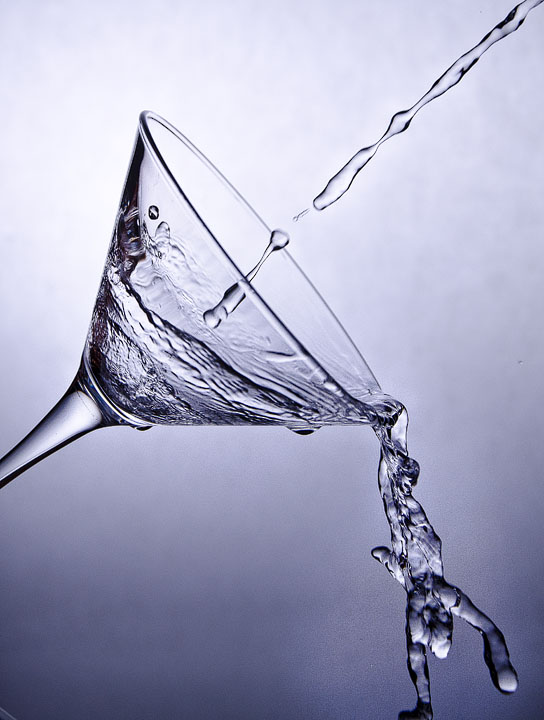 Silver Surfer or Aquaman?Editor's Choice for Technical Merit
Silver Surfer or Aquaman?Editor's Choice for Technical MeritPhotographed by Sheila "Shee" Anchetta (burzilai)
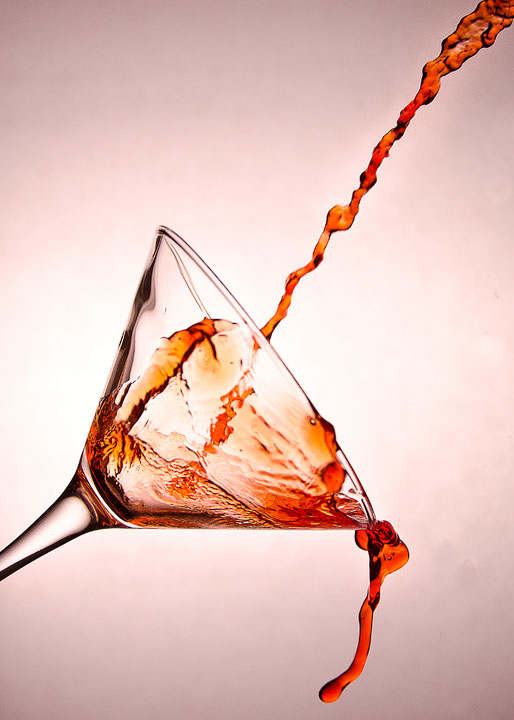 Red Wine
Red WinePhotographed by Sheila "Shee" Anchetta (burzilai)
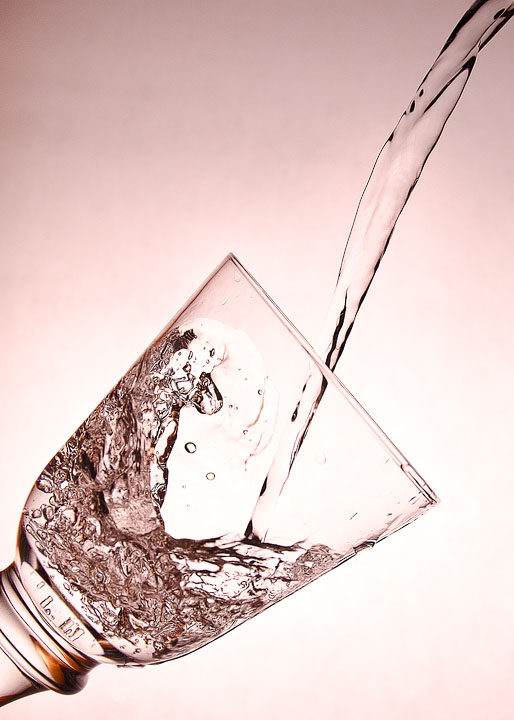 Pour me a cup of water
Pour me a cup of waterPhotographed by Sheila "Shee" Anchetta (burzilai)
Shee's raindrop images were also outstanding. It was hard to pick a favorite between the two.
Refracting a rain drop did a wonderful job capturing the shape of the drop and the refracted image of the background, and
A raindrop captured wonderful clarity and color in the leaf. The leaf in
Refracting a rain drop does look a bit over-sharpened to me, and I might have tried only selective sharpening the raindrop, or using the "fade" option under smart sharpening to prevent the highlights on the leaf from becoming too prominent. This is a wonderful image that could perhaps be improve slightly by preventing the distraction of oversharpened highlights on the leaf.
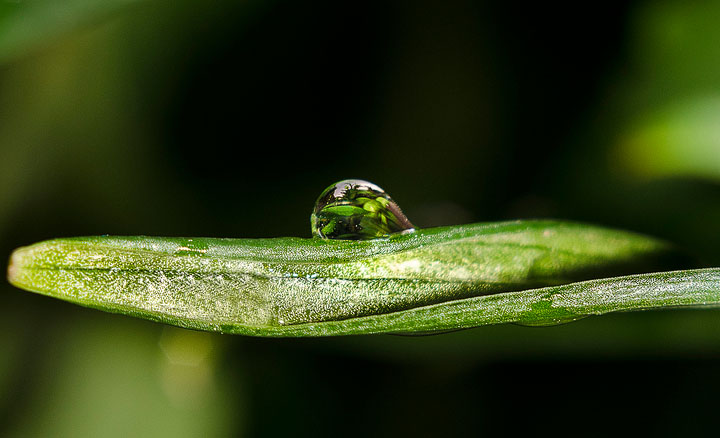 Refracting a rain drop
Refracting a rain dropPhotographed by Sheila "Shee" Anchetta (burzilai)
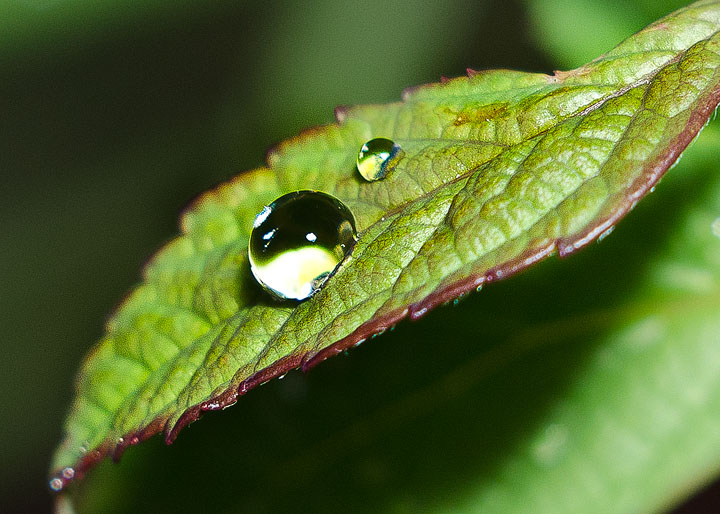 A raindrop
A raindropPhotographed by Sheila "Shee" Anchetta (burzilai)
I appreciated Marilyn's image of
Snails & tadpoles in the desert? because of its insightfulness. I've said before that the three primary qualities that are hallmarks of great imagery are that they are captivating, insightful, and compelling. In some ways, the quality of being insightful is the most important, because it is this quality that helps us to observe or better understand something new about the world that surrounds us. It's fascinating to see the small creatures that survive in the sparse water in the desert.
 Snails & tadpoles in the desert?
Snails & tadpoles in the desert?Photographed by Marilyn McKinney
Marilyn's image titled
Under the water at Lost Creek was another composition that probably would have benefitted from the use of a polarizer. The polarizer would have helped to eliminate the glare (and hot spots) on the water, and would have allowed the viewer to better see the fascinating world under the water.
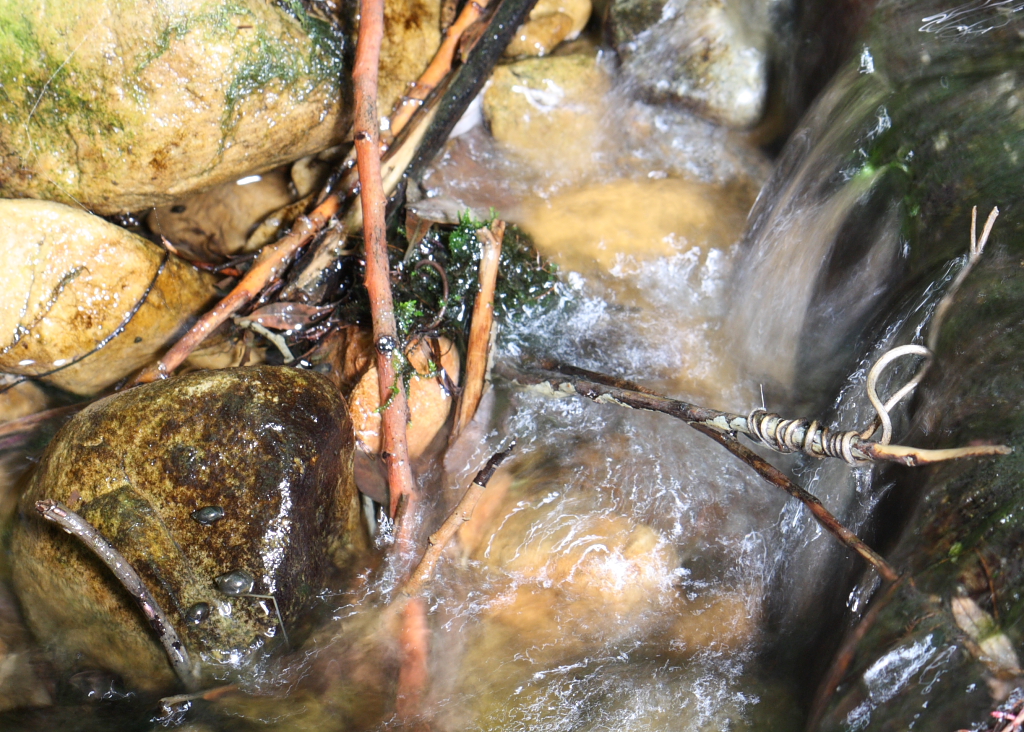 Under the water at Lost Creek
Under the water at Lost CreekPhotographed by Marilyn McKinney
I really liked the flow of water in Marilyn's image titled
Slow flowing water at Lost Creek, but I was distracted by the slightly out-of-focus background. (It looks like there might be a bit of motion blur too.) I wonder if she could have eliminated both of these issues by reframing the image to concentrate on the beautiful color and form of the flowing water in the foreground. The shutter speed and aperture were just about perfect to capture the water, but the inclusion of the slightly out-of-focus background became a distraction. I can't say for sure whether it was even possible to frame the scene with just the flowing water, but I can imagine what a fascinating (and almost abstract) study it would have made.
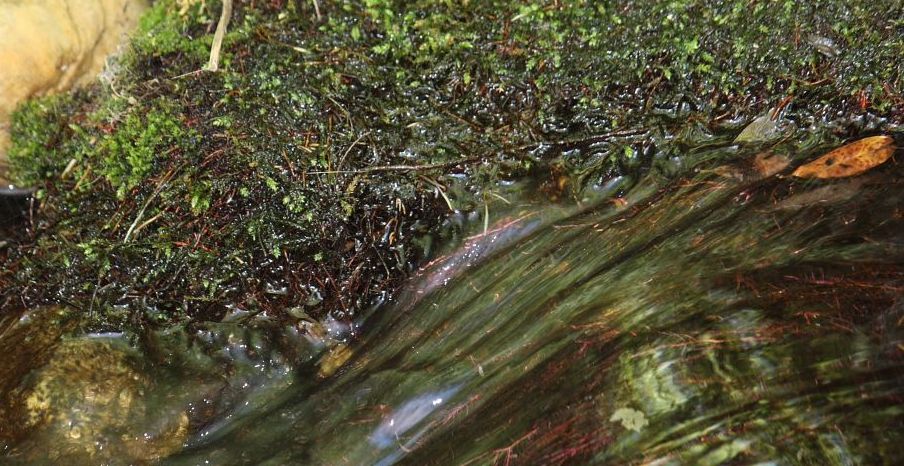 Slow flowing water at Lost Creek
Slow flowing water at Lost CreekPhotographed by Marilyn McKinney
Juilie's
Ocean Star captured wonderful colors in a fascinating environment, but I suspect it also suffered a bit from motion blur (shot at a shutter speed of 1/25 sec). Julie very smartly bumped the ISO up to 3200 to try to get the shutter speeds she needed, but it looks like this still wasn't quite enough. Photoshop's Smart Sharpen filter does a wonderful job with this image though, since it's "intelligent" algorithms are smart enough to apply sharpening only to the areas of the image that are close to being sharp, and leave the rest of the image alone. I've attached a version of the image with Smart Sharpening applied below Julie's original image.
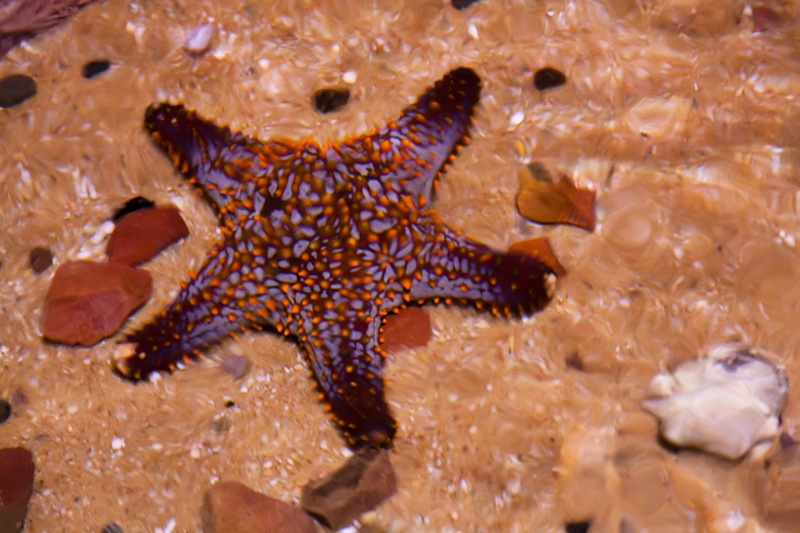 Ocean Star
Ocean StarPhotographed by Julie Schroeder (WriteHeart)
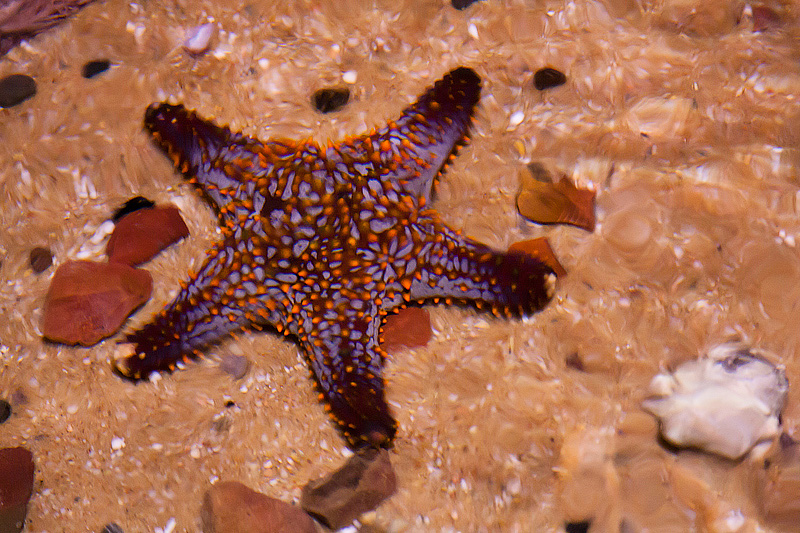 Ocean Star
Ocean StarPhotographed by Julie Schroeder (WriteHeart), Smart Sharpened in Photoshop
Thank you to everyone that participated in this assignment. As usual, you are an inspiration, and have helped me discover new ways to use my imagery to convey ideas or concepts.